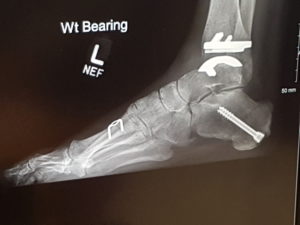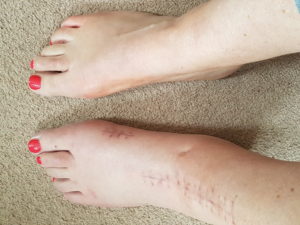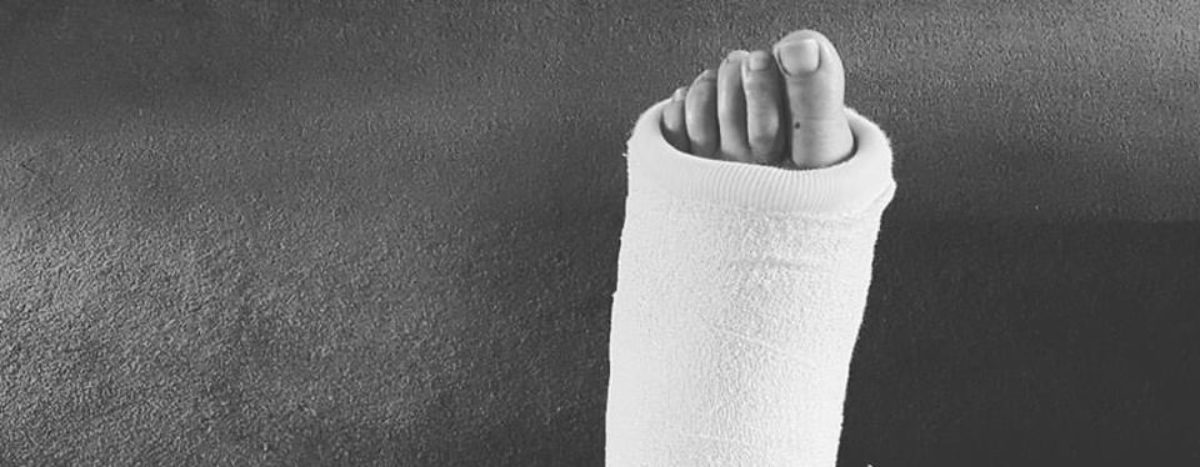
9 weeks after my first operation and 6 after the second I was finally weight bearing. The instructions were to take it easy (and slowly), wean myself out of the boot and into an A60 splint. I could use crutches as required and walk barefoot around the house.
All sounds so easy…..
I had barely finished celebrating when I found that I had hardly any shoes that fit! No matter how much I had convinced myself that the swelling was minimal my shoes don’t lie. While the splint adds a little extra width in a trainer the swelling added quite a lot extra. I had all these plans for outfits that I could wear with matching footwear but it turned out that I only had one pair of trainers that fit.
At this point I clearly still need to elevate my foot as much as possible.
And then there’s the pain. Apparently the best form of pain relief for your new ankle is not to use it! As soon as I started weight bearing the pain level increased. This is not entirely as bad as it might seem as pain is a very good way of letting you know that you are overdoing it. So it’s time to tune into what my body is telling me and to take things slowly – don’t run before you can walk. (I always knew I would get that pun in at some point!)
Onto walking: The gait is all over the place. I am limping heavily, although in the splint and trainers it does improve. I find that on very short walks I can manage with one crutch but for anything longer two is best and a great assistance with the pain. I’d rather go on two crutches than take pain killers. The pain seems to come mostly from the heel and the Achilles. It’s not a sharp pain, more like a really bad ache. It’s mostly bearable and it is still very early days.
I’ve been driving my automatic car for a few weeks now. Luckily it was my left ankle that was operated on. This gives me the chance to get out without assistance and gives me some independence. I really enjoy swimming. It doesn’t seem to stress the ankle at all and I feel so normal in the water. I’ve been using the buoyancy to take my body weight so that I can practice walking as normally as possible. I’m also visiting the gym regularly and using an exercise bike, which is helping me to regain the strength in my legs without stressing the ankle.
I’m also making use of an ice pack to help to reduce some of the swelling and I like to give my foot and ankle a massage at least once a day with a generous application of Bio Oil. I give my ankle a good wiggle to test the range of movement. Best of all though is that I can now finally carry my own drink.

Did I mention swelling?




